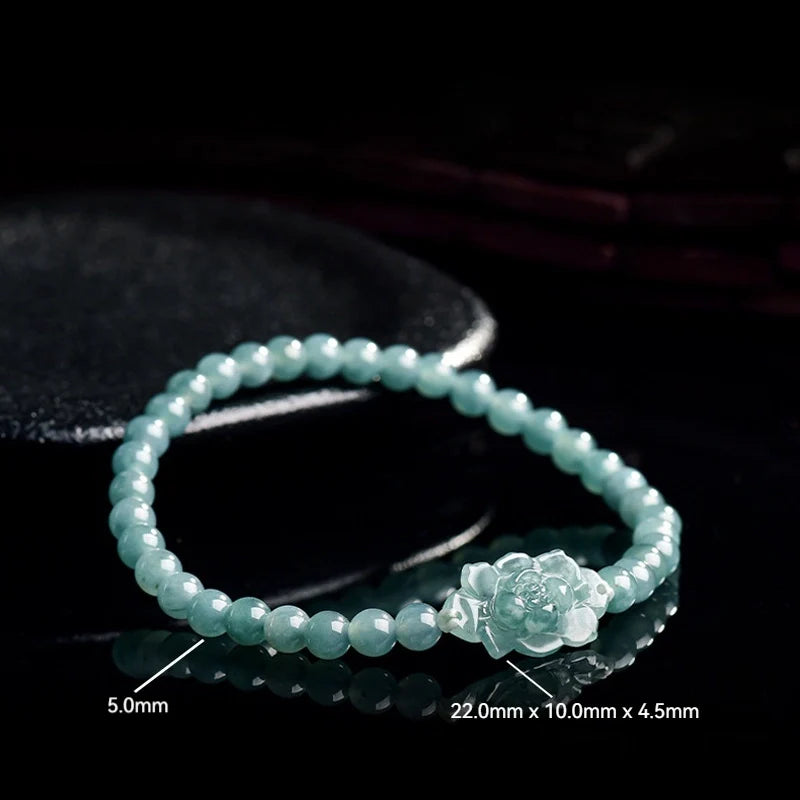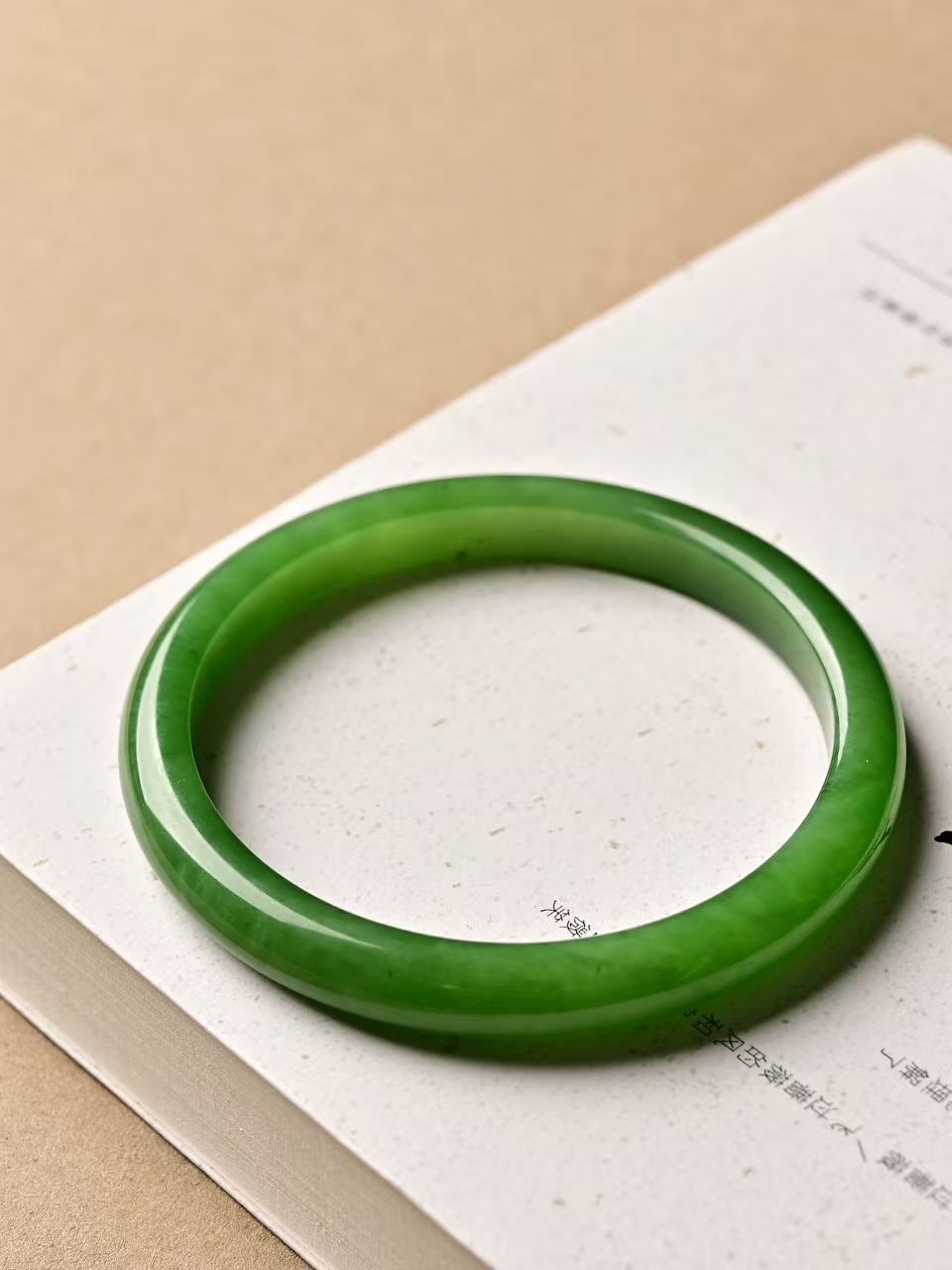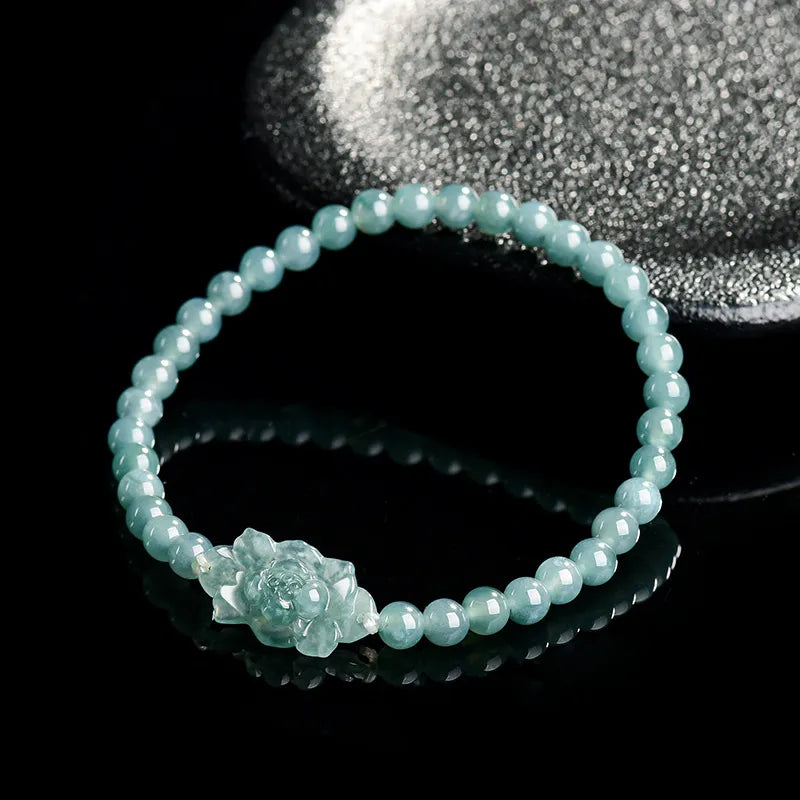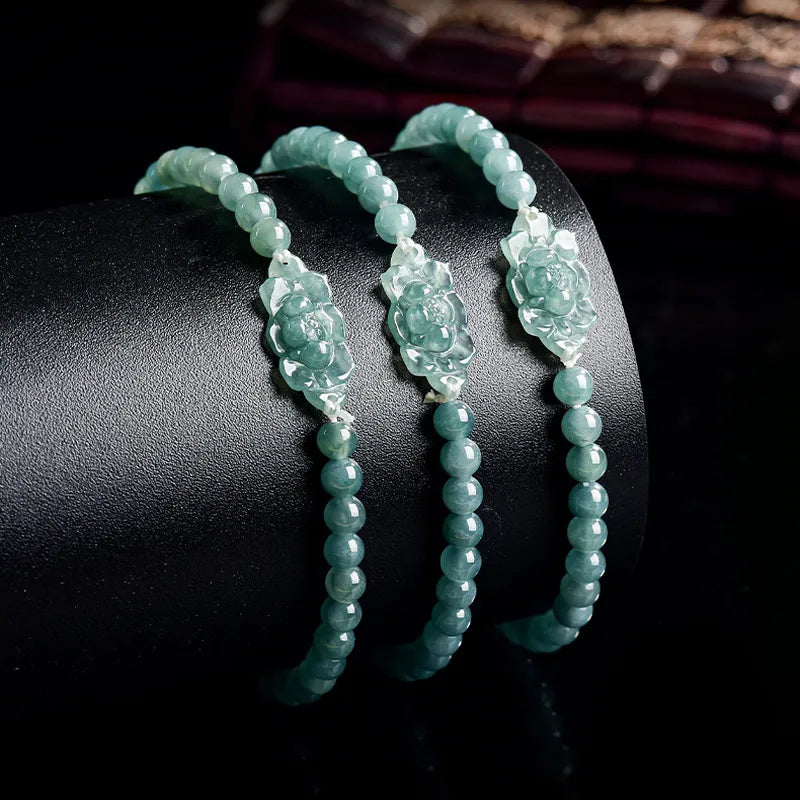Essential Tips for Selecting Authentic Hetian Jade Bracelets
Visual Inspection: Mastering Color, Texture, and Structure
Color Evaluation: Natural vs. Artificial Hues
Authentic Hetian jade bracelets exhibit colors that transition naturally, with subtle gradients and soft edges. For example, high-quality white jade (known as "mutton fat jade") should resemble the creamy texture of sheep’s tail fat, avoiding harsh brightness or grayish undertones. Beware of bracelets with overly uniform colors or artificial-looking vibrancy, as these often indicate dye treatments. Using a magnifying glass, check for uneven color distribution near cracks or edges—a hallmark of synthetic dyes.
Texture and Luster: Identifying Genuine Oiliness
True Hetian jade feels smooth and waxy, with a distinctive "oil-like" sheen that reflects light softly. This luster differs from the glassy shine of imitations like quartz or resin. To test, hold the bracelet under natural light and observe how light interacts with its surface. Genuine jade will diffuse light gently, while fakes may produce sharp reflections or a dull, plastic-like appearance. Additionally, rub the bracelet against your cheek—authentic jade maintains a cool temperature longer than synthetic materials.

Internal Structure: Fiber-Like Patterns Under Light
Shine a strong flashlight through the bracelet to examine its internal composition. Authentic Hetian jade reveals a fibrous, interwoven structure resembling tangled silk threads, with varying densities and directions. This texture is a result of millions of years of geological formation. In contrast, imitations may display uniform bubbles, grid-like patterns, or overly crystalline structures. For instance, glass仿品 (glass imitations) often showcase concentric circles or air bubbles, while resin-filled fakes lack natural complexity.
Physical Tests: Hardness, Sound, and Weight
Hardness Test: Scratch Resistance
Hetian jade ranks 6.5–7 on the Mohs scale, making it resistant to scratches from common metals. Gently scrape an inconspicuous area of the bracelet with a steel needle or knife tip. Authentic jade will remain unmarked, while softer materials like marble or resin may show visible scratches. However, exercise caution to avoid damaging the piece during testing.
Sound Test: Resonance and Clarity
Tap the bracelet lightly with a metal rod or coin. A genuine Hetian jade bracelet produces a clear, ringing sound akin to striking a bell, with a lingering resonance. This is due to its dense, compact structure. Fakes, such as glass or plastic, emit dull, short-lived thuds. For a more precise test, compare the sound to that of a known authentic jade piece.
Weight and Density: Heft and Balance
Hetian jade has a specific gravity of 2.95–3.17 g/cm³, giving it a noticeable weight when held. A genuine bracelet should feel substantial and balanced, with no hollow or lightweight sections. To test, compare it to a similar-sized object of known material, such as a glass bottle. If the bracelet feels unusually light or top-heavy, it may be an imitation filled with resin or other lightweight substances.
Advanced Verification: Certificates and Professional Tools
Authentication Certificates: Verifying Credibility
Always request a certificate from an accredited gemological laboratory when purchasing a Hetian jade bracelet. Look for logos such as CMA (China Metrology Accreditation) or CNAS (China National Accreditation Service for Conformity Assessment), which indicate compliance with international standards. Verify the certificate’s authenticity by scanning its QR code or checking its details on the issuing agency’s official website. Avoid purchases without certificates or those with unclear, handwritten labels.
Professional Tools: Magnifiers and Light Sources
For advanced buyers, investing in a 10x loupe or gemological microscope can reveal microscopic details invisible to the naked eye. Use these tools to inspect the bracelet’s surface for "flywing" inclusions—tiny, reflective mineral flakes unique to Hetian jade. Additionally, a UV light can help detect artificial treatments. Authentic jade typically shows no fluorescence under UV, while resin-filled fakes may glow blue-white.
Expert Consultation: Seeking Second Opinions
If uncertain, consult a certified gemologist or visit a reputable jewelry appraisal center. Professionals use specialized equipment like refractometers and spectrometers to analyze the bracelet’s chemical composition and optical properties. They can also identify subtle signs of treatment, such as acid etching or dye infiltration, which are difficult to detect with basic tools.
By combining these visual, physical, and advanced techniques, collectors and enthusiasts can confidently identify authentic Hetian jade bracelets. Remember to prioritize transparency, request documentation, and trust your instincts—after all, a genuine piece of Hetian jade should resonate with both beauty and history.






